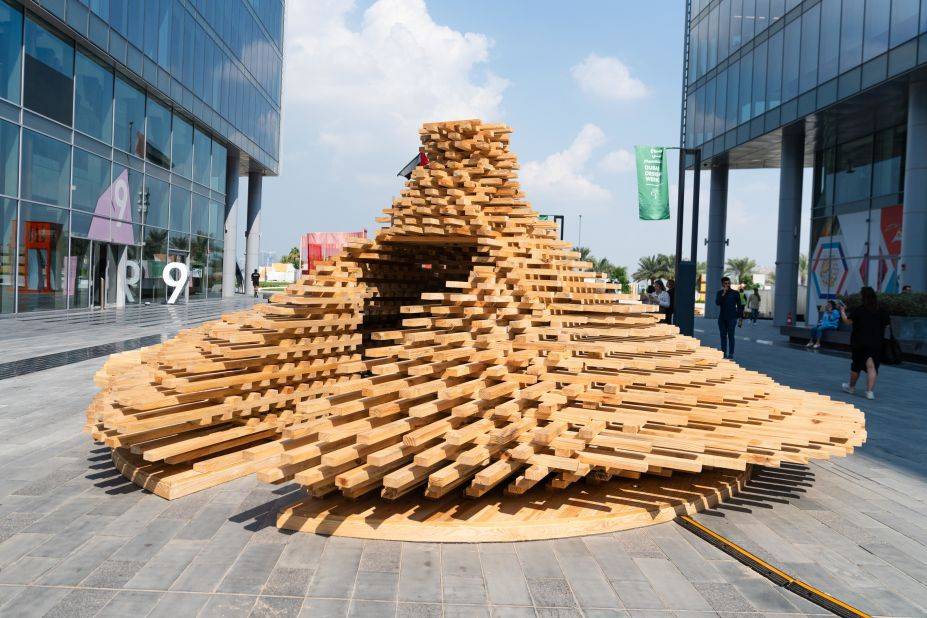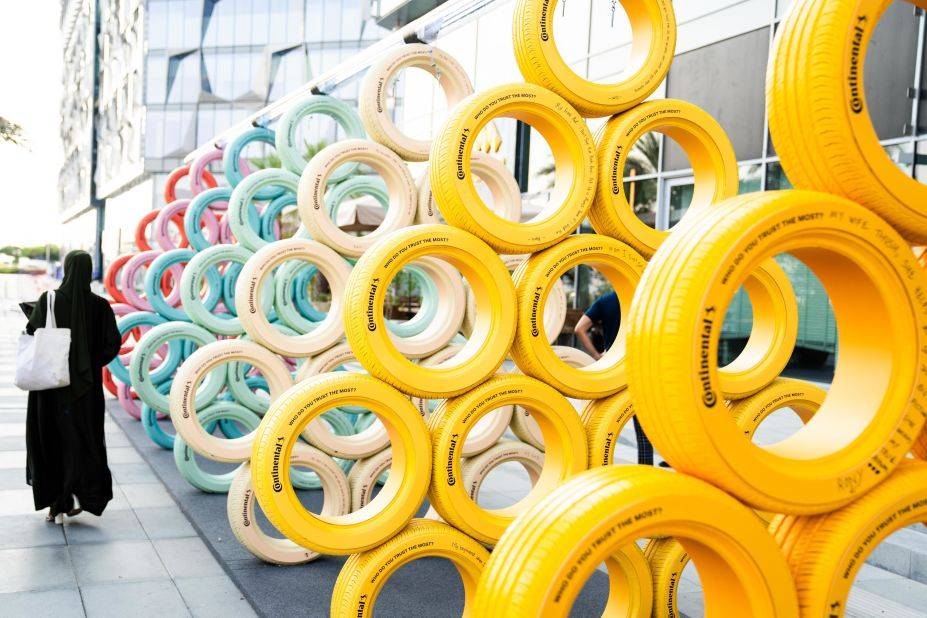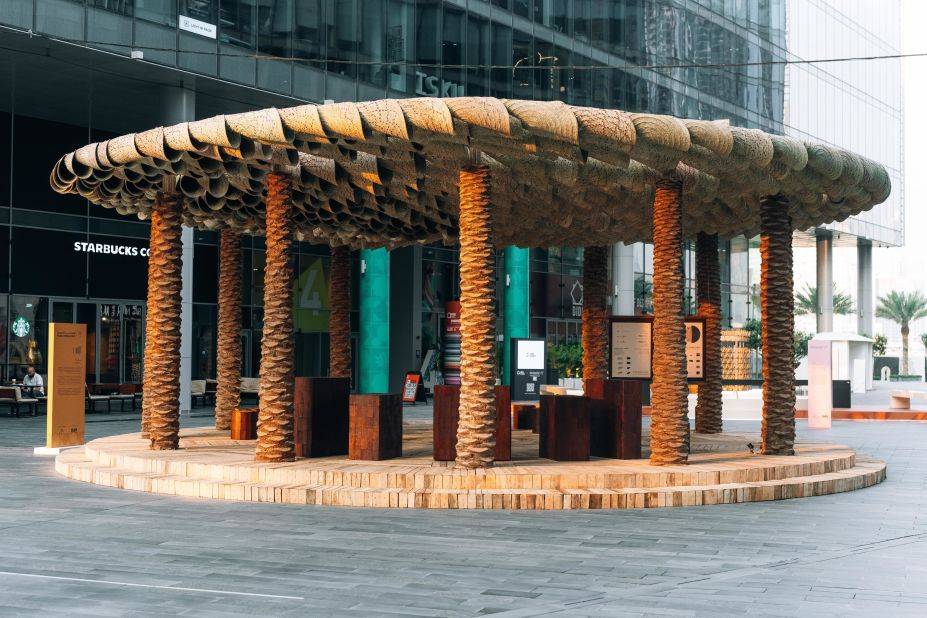The first thing that comes to mind when you think of Dubai is its stunning architecture; Now a group of architects and designers are embracing sustainable innovation to create facilities a fraction of the size of the city’s tallest towers, but they’re no less inspiring than what they revealed at Dubai Design Week.
Among them, Dubai-based Syrian Ahmed Al-Qattan created an intimate, coop-style outdoor social space where designers can unleash their ideas. It not only provides shade and seating for humans, but also shelter for pigeons.
The name Designest is inspired by the historical significance of pigeon towers in the Arabian Peninsula, where buildings, often with graceful arches and elaborate carvings, were built to shelter pigeons in harsh climates and use their waste as compost.
The design is rectangular in design with pigeon nests at the top and three arched doors at the bottom to welcome human visitors.
The human and pigeon sections are separated and the bird excrement collected from the top is used as fertilizer for the plants in the design in Dubai.

Dubai Design Week
Al Qattan’s design was part of the annual Dubai Design Week and won first place in an Urban Commission competition that invites designers and architects to create innovative outdoor furniture.
Al-Qatan said, “The competition called for the design of a shade device, a gathering place or a seating area.”
He added, “I’ve tried to put it all together, but I’ve always been interested in non-human design, and I’ve always thought, why does everything have to be human-centered?”
In its ninth year, Dubai Design Week, which runs from November 7 to 12, is the largest event of its kind in the region, featuring workshops, installations, exhibitions and lectures.

Cup 28
Ahead of the upcoming COP28 climate conference in Dubai, this year’s Design Week theme focuses on sustainable practices and materials.
Mette Teijen Christensen, director of Dubai Design Week’s main design exhibition (Downtown Design), said sustainability has been used at the event for the past six years, “but this year, it’s really about new kinds of sustainable practices. For example, “It’s not just about looking at 3D printing, it’s about what you can 3D print. There’s a wide variety of things to look at.”
Al Qattan’s creation was originally designed to be 3D printed using recycled fiberglass reinforced concrete, but time, cost and weight constraints meant prototypes created for Dubai Design Week used a combination of environmentally friendly methods and materials, including mixing plant materials. Sawdust instead of plastic, and using sand for 3D printing.

Al-Qattan, an independent architect, says, “Environmental responsibility in your design from the early design stages is no longer a specialty, but a necessity.”
“That’s why I did a master’s degree in renewable energy engineering. It wasn’t about architecture, but I wanted to know from the start how to make my design more sustainable.”
Other design installations that fit the theme of sustainability include a pavilion by Emirati architect Abdullah Al Mulla (of Palm), made entirely from indigenous palm trees, and an installation made from waste by Dubai-based architecture and interior design firm Pulp Fractions. Pressed, dried and shaped pulp.

“We’re looking for practical, sustainable and scalable designs across the UAE region,” said Tjen Christensen, director of the flagship design fair (Downtown Design).
This is Al-Qatan’s third attempt to win the Urban Committees category, Al-Qatan said, “Competitions are the best place to express your ideas without being limited by your customers’ opinions, cost or feasibility.”
“It really helps push the boundaries of what’s possible.”
(Arya Jyoti-CNN)

“Award-winning beer geek. Extreme coffeeaholic. Introvert. Avid travel specialist. Hipster-friendly communicator.”
